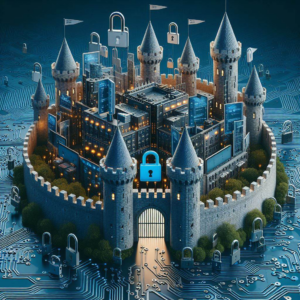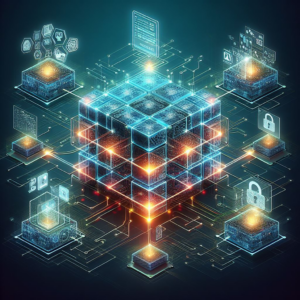OSINT (Open Source Intelligence) Technieken
Unveiling the Digital Detective: Mastering OSINT with Software Tools
 In the labyrinthine world of online information, Open Source Intelligence (OSINT) emerges as a potent tool for discerning truth and unearthing hidden patterns. By harnessing publicly available data, coupled with the power of software, individuals, businesses, and even governments can unlock actionable insights, forge connections invisible to the naked eye, and empower informed decision-making. Let’s embark on a journey through the multifaceted landscape of OSINT, exploring its methodologies, the game-changing role of software, and ethical considerations for responsible practice.
In the labyrinthine world of online information, Open Source Intelligence (OSINT) emerges as a potent tool for discerning truth and unearthing hidden patterns. By harnessing publicly available data, coupled with the power of software, individuals, businesses, and even governments can unlock actionable insights, forge connections invisible to the naked eye, and empower informed decision-making. Let’s embark on a journey through the multifaceted landscape of OSINT, exploring its methodologies, the game-changing role of software, and ethical considerations for responsible practice.
Demystifying OSINT:
At its core, OSINT lies in the art of collecting and analyzing publicly accessible data – websites, social media platforms, blogs, news archives, public records – and transforming it into actionable intelligence. Imagine piecing together a jigsaw puzzle, each fragment gleaned from publicly available sources, culminating in a clearer picture of the subject at hand.
Software: The OSINT Arsenal’s Secret Weapon:
The integration of sophisticated software tools has revolutionized OSINT, morphing it from a laborious endeavor into a streamlined, scalable process. Let’s delve into the arsenal at an OSINT practitioner’s disposal:
- Social Media Scrutiny: Tools like Maltego and SpiderFoot weave intricate webs of connections, analyzing social media data to reveal relationships, influencers, and potential anomalies. Imagine tracking sentiment during a crisis, identifying misinformation’s genesis, or locating individuals based on their online interactions.
- Web Scraping Prowess: Automation software like BeautifulSoup and Scrapy act as nimble web crawlers, extracting valuable data from websites with unparalleled efficiency. Picture harvesting financial reports, competitor insights, or industry trends from publicly available datasets, painting a comprehensive picture of your market landscape.
- Metadata Magic: Software like ExifTool and FOCA unlock the hidden stories embedded within digital files. Analyze photos to determine their location, creation date, or even the camera used, potentially pinpointing crucial leads in investigations.
- Geospatial Intelligence: GIS software like QGIS and ArcGIS transform geographical data into insightful maps, visualizing locations mentioned in open sources and revealing spatial relationships. Imagine mapping crime hotspots, tracking asset movement, or analyzing environmental risks by overlaying this data with other OSINT findings.
- Dark Web Delving: Responsible exploration of the dark web is facilitated by tools like Tor, Dark Web ID, and OnionScan. Gain valuable insights into potential cybersecurity threats by monitoring forums, marketplaces, and other relevant dark web locations, but always adhere to ethical guidelines and legal boundaries.
Unlocking the Power:
Beyond mere efficiency and scalability, software empowers OSINT practitioners in significant ways:
- Real-time Insights: Monitor sentiment shifts during elections, track competitor moves in real-time, or stay updated on breaking news events that could impact your organization. Advanced tools provide continuous data streams, ensuring you stay ahead of the curve.
- Visual Storytelling: Transform raw data into compelling narratives. Tools like Tableau and Gephi generate network graphs, map the spread of misinformation, or identify key influencers within online communities, making complex relationships and trends readily understandable.
Balancing Power with Responsibility:
While software amplifies OSINT’s capabilities, ethical considerations and legal awareness are paramount:
- Respecting Privacy: Always adhere to data privacy regulations and ethical guidelines. Remember, publicly available doesn’t equate to permissible.
- Accuracy as the Cornerstone: Verify information from multiple sources before drawing conclusions. Fabricated data can lead to disastrous misinterpretations.
- Responsible Use: Avoid using OSINT for malicious purposes or personal gain. Remember, the power is meant to empower, not exploit.
Navigating the Legal Landscape:
The legal landscape surrounding OSINT varies by jurisdiction. Be aware of relevant laws governing data collection, privacy, and access to information before diving in. If unsure, seek legal counsel to ensure your activities comply with applicable laws.
The Future of OSINT:
As technology evolves, the synergy between OSINT techniques and software will continue to shape the future of intelligence gathering. Imagine AI-powered tools automating data analysis, real-time threat detection across the digital landscape, and even predictive intelligence based on vast datasets. This future, however, hinges on responsible use and ethical considerations, ensuring OSINT remains a force for good.
So, step into the shoes of a digital detective, equipped with the knowledge and tools at your disposal. By harnessing the power of OSINT responsibly, you can unlock hidden truths, make informed decisions, and navigate the ever-evolving digital landscape with newfound confidence. Remember, the key lies in ethical practice, legal awareness, and a thirst for knowledge – the essential ingredients for wielding the power of OSINT responsibly and effectively.
Ready to delve deeper? Explore these resources to refine your OSINT skills and stay updated on the latest developments

 The Tor Browser, short for The Onion Router, isn’t a magic cloak of invisibility. Instead, it’s a powerful tool for online anonymity. Its unique architecture anonymizes your activity by routing your internet traffic through a series of volunteer-operated servers, encrypting it multiple times like layers of an onion. Imagine leaving a trail of breadcrumbs that gets scrambled and scattered, making it nearly impossible for anyone to track your steps. This grants several key advantages:
The Tor Browser, short for The Onion Router, isn’t a magic cloak of invisibility. Instead, it’s a powerful tool for online anonymity. Its unique architecture anonymizes your activity by routing your internet traffic through a series of volunteer-operated servers, encrypting it multiple times like layers of an onion. Imagine leaving a trail of breadcrumbs that gets scrambled and scattered, making it nearly impossible for anyone to track your steps. This grants several key advantages: Embarking on the quest for unbeatable password security demands more than just technical jargon – it requires a comprehensive and evolving strategy. In this guide, we go beyond the basics to provide you with a holistic approach to fortify your digital identity against the ever-evolving tide of cyber threats. Join us on this transformative journey that amalgamates innovation with usability, creating a robust and user-friendly defense.
Embarking on the quest for unbeatable password security demands more than just technical jargon – it requires a comprehensive and evolving strategy. In this guide, we go beyond the basics to provide you with a holistic approach to fortify your digital identity against the ever-evolving tide of cyber threats. Join us on this transformative journey that amalgamates innovation with usability, creating a robust and user-friendly defense. Blockchain technology has taken the world by storm, promising transparency, decentralization, and a revolution across various industries. However, with great power comes great responsibility, and blockchain introduces its own set of cybersecurity challenges. This article delves into the heart of blockchain, its technical intricacies, and the burning questions surrounding its vulnerabilities.
Blockchain technology has taken the world by storm, promising transparency, decentralization, and a revolution across various industries. However, with great power comes great responsibility, and blockchain introduces its own set of cybersecurity challenges. This article delves into the heart of blockchain, its technical intricacies, and the burning questions surrounding its vulnerabilities.